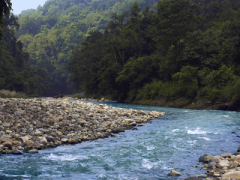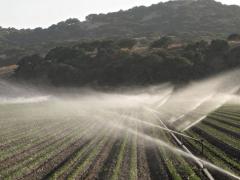Acid rain. An analysis of thirty years of Dutch acidification policy
In the past, no unnecessary policy measures have been taken to reduce acidification (acid rain). Although the severity of acidification has declined because of policy implementation, acidification issues have certainly not been solved, yet. These are the main findings of a study that looks back on 30 years of acidification issues in the Netherlands.
In February 1983, the Dutch Lower House passed the ‘De Boois’ motion, which asked that an extensive inventory research would be conducted into ‘the magnitude of the damage expected from soil acidification’. It also asked for a ‘programme of measures’.
The motion marked the beginning of the political realisation that, also in the Netherlands, acid rain was a major environmental problem. What were the measures taken in the beginning - and to what effect? Is acid rain currently a thing of the past? And was it ever an actual problem?
This report looks back on all aspects of nearly 30 years of acid rain problems in the Netherlands, and provides an overview of the latest insights. It is the main conclusion of this study that, in the past, no unnecessary measures were taken to counter acidification. The seriousness of the acidification problem has been visibly reduced, although it has definitely not been solved yet.
Main findings of the study
The beginning of a problem
- In 1967, Swedish researcher Svante Odén alerted both the general public and the scientific community to the issue of long-range transboundary air pollution and the related acidification of precipitation in large parts of Europe.
- In the 1970s, acidification in Scandinavia was conclusively linked to this long-range transboundary air pollution.
- In 1979, 31 countries, including the Netherlands and those in the European Economic Community, joined together in the Convention on Long-range Transboundary Air Pollution (LRTAP), to combat the decline in environmental quality caused by this kind of air pollution.
Effects of acid rain
- Over the past decades, research has confirmed that excessive acid deposition is damaging to natural ecosystems.
- Trees suffer the effects of acidification when other stress factors are also present, such as tree diseases, storms, cold weather, droughts, or when ozone levels are too high.
- Forests have not been completely destroyed, but they have been damaged. Atmospheric deposition of acid (and nitrogen) has been proven to add to changes in soil chemistry and groundwater quality, and to biodiversity loss in forest undergrowth. Related changes have also been found in other ecosystems.
- Any damage to nature in the Netherlands would have been markedly greater if acid (and nitrogen) deposition would have remained at the high levels of 1980.
- According to soil models, the harmful acidification of soils has been slowed down, and exhaustion of buffer capacities of forest soils postponed. Measurements of soil chemistry have confirmed that, although soil acidification in the Netherlands is slowing down, it is in fact still continuing.
- Nitrogen, an ingredient of acid rain, in addition has a eutrophying effect. Too much nitrogen leads to a decline in the number of species. The eutrophying effect of nitrogen deposition is more instantaneous and can be easier observed in nature the acidifying effect.
Policy
- In 1984, a Dutch policy document for the first time was dedicated fully to the issue of acidification. Subsequent policy documents have sharpened and fine-tuned this policy, and measures to counter acidification were entered into law, next to the implementation of other policy instruments.
- National emission and deposition targets have been relaxed several times since the 1980s, because of unfeasibility or due to changing scientific insight. Such national targets have since become redundant; since nowadays, targets are set at the European level.
- Since the 1980s, sulphur dioxide emissions in western Europe and the Netherlands have decreased by 75 and 85 per cent, respectively. Nitrogen oxide emissions have also decreased since the late 1980s; by 30 per cent in western Europe as a whole, and in the Netherlands by 40 per cent. Ammonia emissions have decreased in western Europe, since 1990, by 10 per cent, while, in the Netherlands, this decrease was considerably larger, namely 50 per cent.
- Acid deposition in the Netherlands has decreased by 50 per cent, since 1980. In Dutch nature areas, policy implementation has realised an 80 per cent decrease in the exceedance of critical deposition levels for acidification.
- Although the severity of acidification has declined because of policy implementation, acidification issues have certainly not been solved, yet.
- Policy has been effective in reducing soil and water acidification, while also reducing the severity of eutrophication and adverse health effects from air pollution. In retrospect can be stated that the implemented policies were justified.
- Policies are becoming increasingly integrated. Policies aimed at specific compounds are combined to form one cohesive policy that addresses various compounds and effects simultaneously.
Concluding remarks
- Policy measures in the fields of acidification, climate, biodiversity, nitrate and local air pollution are becoming more and more intertwined. In addition, the focus is increasingly on the common causes: energy use, agriculture, and traffic and transport . Such a joint approach also leads to cost reductions.
- Over the past thirty years, political decision-making has shifted from national levels to the European arena.
- Policies aimed at combatting acid deposition have definitely been successful. Excessive nitrogen deposition, however, has been tackled with much less success.
- No unnecessary policy measures have been taken to reduce acidification. In hindsight it can be concluded that applying the precautionary principle was justified.
Authors
Specifications
- Publication title
- Acid rain. An analysis of thirty years of Dutch acidification policy
- Publication date
- 8 November 2010
- Publication type
- Publication
- Publication language
- Dutch
- Product number
- 92545




